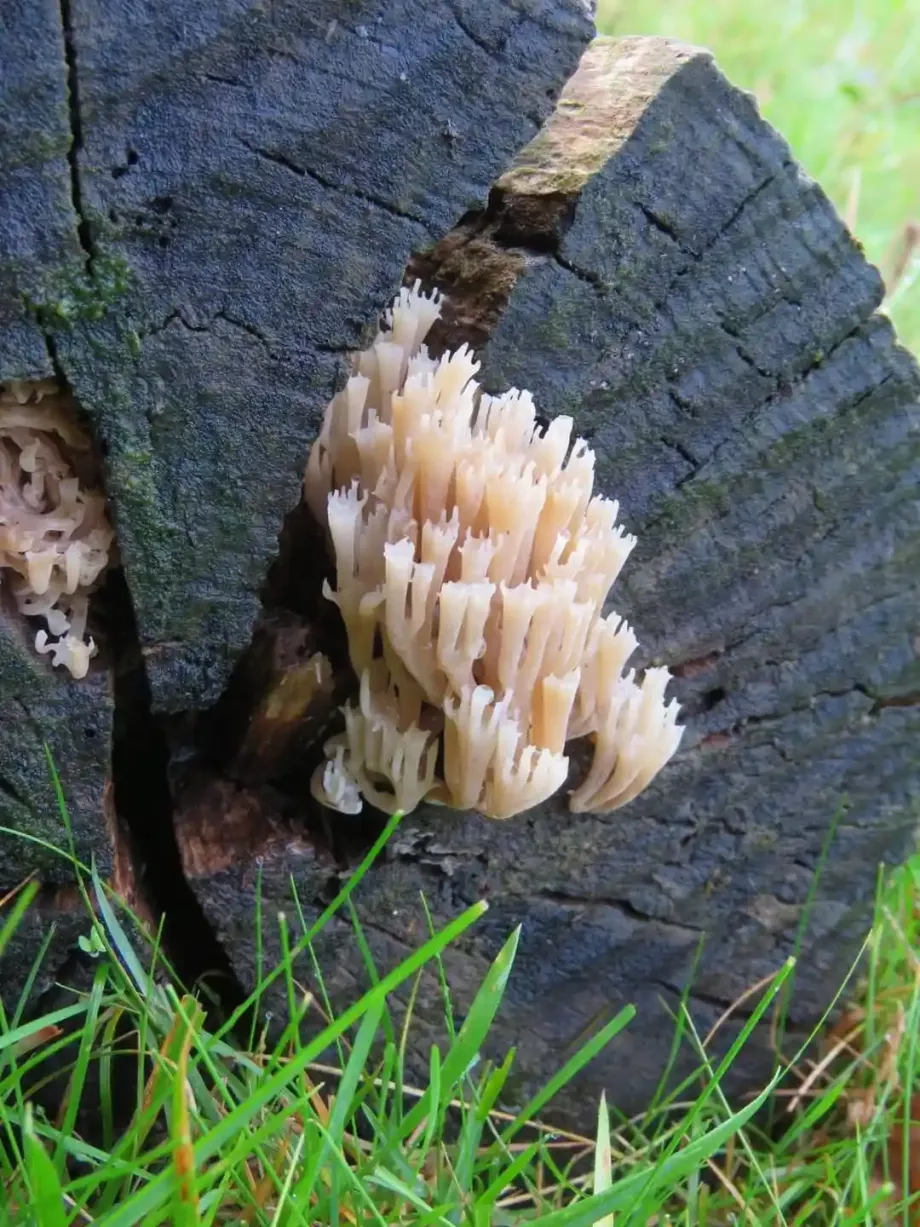
©️ Anne Rowe
They had two good finds in October. Anne Rowe spotted saffrondrop bonnet, Mycena crocata, commenting, “First time I've come across this at Hothfield. It exudes a bright orange sap and smells slightly of bleach.”
Val Butcher noticed crown tip candelabra coral, Artomyces pyxdatus, which had been spotted by Anne in 2021, and was found again last month in at least one other location on the reserve. Not reliably recorded in this country at all since 1886, so considered extinct, it was found in Suffolk in 2012 after more than a century, and has now been recorded here in 2021, 2023 in Addington and here this year. This coral fungus, creamy to yellow or white to pale pink, is 2-10 cm high, and browns with age. It grows many small upright branches on top of each other, like a candelabra. The tip of each branch has a central depression surrounded by several pointed tips, resembling a tiny crown. It is found on rotted usually mossy hardwood, sometimes softwood.

©️ Anne Rowe
Some fungi simply dissolve, slimy and smelly, after spore production, others become fossilised, like bracket fungus on trees. What always remains is the underground extensive network of mycelium. Anyone who has dealt with honey fungus in their garden and pulled out ropes of rhizomorphs, strands of mycelium, will know just how far and how strong strands of mycelium can grow.
Area Manager Ian Rickards spoke recently to the BBC about the re-discovery of rare species such as these, and how some of the sites where these species exist are being threatened with development or illegal dumping. Macrofungi, mushrooms, are recognised as having an essential role in the natural process of decay and regeneration, providing habitats and food for other species, while microfungi, mould, mildew, yeast and lichen, assist in the production, flavouring, and preservation of food and medicine, such as bread, soya products, cheese, wine, and beer.
At Cop16, which opened in late October, the UK and Chile will have proposed to the UN convention on biological diversity that fungi should be placed alongside animals and plants as a separate realm for environmental protection. Biologist Merlin Sheldrake explains that “Fungi are largely invisible ecosystem engineers that underwrite the regenerative capacity of the living world. With many key roles in regulating the climate and sustaining global biodiversity…. It is vital that we make progress on this challenge, both to combat the destruction of fungal communities, which accelerates both climate change and biodiversity loss, and to make it easier to work with fungi to help respond to the many pressing crises we face.” The proposers say there is a growing body of evidence that fungi play a crucial role in remediating soil, sequestering a third of carbon from fossil fuel emissions, and breaking down plastics and polluting chemicals. Without fungi, most plants are unable to live outside water and therefore life on earth as we know it would not exist.
At the local level, Ian would like to draw your attention to Kent Wildlife Trust's Save Our Woodlands appeal; details of which can be found here.

